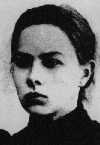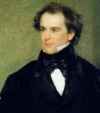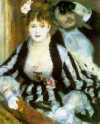 After Iraqi President Saddam Hussein‘s troops invaded Kuwait on August 2, 1990, several countries in the United Nations formed a military coalition—including troops and equipment from the US, France, and Britain—to force them out. Operation Desert Storm began on January 17, 1991, and, for five weeks, US and British air forces relentlessly bombed Baghdad. This was followed by four days of a ground war, which resulted in Hussein’s troops leaving Kuwait. February 26 is a national holiday in Kuwait celebrating the end of Iraq’s military presence in Kuwait. Discuss
After Iraqi President Saddam Hussein‘s troops invaded Kuwait on August 2, 1990, several countries in the United Nations formed a military coalition—including troops and equipment from the US, France, and Britain—to force them out. Operation Desert Storm began on January 17, 1991, and, for five weeks, US and British air forces relentlessly bombed Baghdad. This was followed by four days of a ground war, which resulted in Hussein’s troops leaving Kuwait. February 26 is a national holiday in Kuwait celebrating the end of Iraq’s military presence in Kuwait. Discuss
Source: The Free Dictionary
 Radar is a means for detecting the position, movement, and nature of a remote object through radio waves reflected from its surface. During the 1930s, several countries independently developed the technology for military use, exploiting radar’s capacity to detect aircrafts and ships. One of the earliest practical radar systems was devised by Sir Robert Watson-Watt, a Scottish physicist and descendent of the inventor of the steam engine, James Watt. What was the “Battle of the Beams”?
Radar is a means for detecting the position, movement, and nature of a remote object through radio waves reflected from its surface. During the 1930s, several countries independently developed the technology for military use, exploiting radar’s capacity to detect aircrafts and ships. One of the earliest practical radar systems was devised by Sir Robert Watson-Watt, a Scottish physicist and descendent of the inventor of the steam engine, James Watt. What was the “Battle of the Beams”?  After Iraqi President
After Iraqi President  Krupskaya was a Russian revolutionary and educator who was a Marxist agitator in the years leading up to the Russian Revolution. She married Bolshevik founder Vladimir Lenin in 1898, while both were serving terms in exile. After the Revolution, she joined the People’s Commissariat of Education and helped develop educational systems that offered both academic and professional training to women and workers. Her biography is known as the most detailed account of Lenin’s life but omits what events?
Krupskaya was a Russian revolutionary and educator who was a Marxist agitator in the years leading up to the Russian Revolution. She married Bolshevik founder Vladimir Lenin in 1898, while both were serving terms in exile. After the Revolution, she joined the People’s Commissariat of Education and helped develop educational systems that offered both academic and professional training to women and workers. Her biography is known as the most detailed account of Lenin’s life but omits what events?  Papiamento is a Spanish-based creole language with Portuguese, Dutch, and English influences that is now primarily used in the Caribbean islands of Aruba, Bonaire, and Curaçao. It developed in the Netherlands’ possessions in the West Indies and possibly arrived there with African slaves, who used it to communicate with Portuguese slave traders. Its name is thought to come from papear, the Portuguese word for “chatter.” Approximately how many people speak Papiamento today?
Papiamento is a Spanish-based creole language with Portuguese, Dutch, and English influences that is now primarily used in the Caribbean islands of Aruba, Bonaire, and Curaçao. It developed in the Netherlands’ possessions in the West Indies and possibly arrived there with African slaves, who used it to communicate with Portuguese slave traders. Its name is thought to come from papear, the Portuguese word for “chatter.” Approximately how many people speak Papiamento today?  Every individual has a place to fill in the world and is important in some respect whether he chooses to be so or not.
Every individual has a place to fill in the world and is important in some respect whether he chooses to be so or not.  Mel Gibson’s The Passion of the Christ, which depicts the last hours of the life of Jesus of Nazareth, is the highest-grossing R-rated film ever made and was nominated for three Academy Awards. Several Jewish groups have expressed concern that the film blames the death of Jesus on the Jews as a collective group and could encourage anti-Semitism. The movie has also sparked debate about whether its depictions of violence are too graphic. In what languages is the film’s dialogue spoken?
Mel Gibson’s The Passion of the Christ, which depicts the last hours of the life of Jesus of Nazareth, is the highest-grossing R-rated film ever made and was nominated for three Academy Awards. Several Jewish groups have expressed concern that the film blames the death of Jesus on the Jews as a collective group and could encourage anti-Semitism. The movie has also sparked debate about whether its depictions of violence are too graphic. In what languages is the film’s dialogue spoken?  The Fiesta sa EDSA is a commemoration of the bloodless
The Fiesta sa EDSA is a commemoration of the bloodless  Renoir’s paintings number in the thousands and are notable for their saturated color, vibrant light, and warm sensuality. Early in his career, Renoir developed a close relationship with Claude Monet and became a celebrated artist of the Impressionist style. At times the two painters worked side-by-side, creating several pairs of paintings that depict the same scenes. Though crippled with rheumatoid arthritis in his later life, Renoir continued to paint. How did he manage to do so?
Renoir’s paintings number in the thousands and are notable for their saturated color, vibrant light, and warm sensuality. Early in his career, Renoir developed a close relationship with Claude Monet and became a celebrated artist of the Impressionist style. At times the two painters worked side-by-side, creating several pairs of paintings that depict the same scenes. Though crippled with rheumatoid arthritis in his later life, Renoir continued to paint. How did he manage to do so?